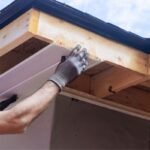A large, well-maintained tree is a must for any backyard. It provides shade, privacy, a strong branch to swing on and a beautiful structure for your children. There are many types of trees available in many sizes and shapes. While some trees lose their leaves while others remain green year round, all of them share one thing: they are living organisms. Living organisms are different from all other things on the planet because they live and die, and trees are no exception. AAA Tree removal Nassau Service can help you if you have significant damage to your yard and your house due to branches or fallen trees. We’ll help you clean up, remove dangerous or fallen trees, or assist with emergency tarp installations.
It doesn’t matter how much you love the oak tree in your yard or how many memories it has brought back, there will be a time when it must go. How can you tell when it’s time? Let’s discover together.
-
Visual Signs
There are many ways to tell if a tree is alive and healthy or is in danger of dying. You should keep in mind that damage to trees may not always be a sign that it’s time to be removed. Sometimes trees can be saved. But you need to know how to tell the difference.
How can you tell the difference?
If you are able to see the trunk you can spot signs of decay and damage. It is possible to save your trunk if you spot it early. However, some damage can be a sign that it’s time to move on.
Start by inspecting the trunk. You should inspect the trunk for cracks, ‘wounds’ and/or areas where branches once were but are now dead stubs. This is usually a sign that it’s time for someone to remove it. Dead and falling branches are another sign that your tree may be in danger.
Next, look at the base of your tree, near the roots. It’s fine if there is nothing unusual. If you see sprouts, it usually means that there is structural damage. Any sign of fungi is not good. Fungi are visible when there is rotting and rot.
-
Root Problems
You can also tell if your tree needs to be removed by noticing discoloration, thinning, or leaves falling that aren’t supposed to. These signs could indicate that your root system is in danger of being damaged or has begun to decay.
The root system keeps the plant alive. The root system absorbs all nutrients and water, and if it fails to do so, the plant will die. If you catch problems early enough, it may still be possible to correct them. An arborist can help you determine the severity of the problem and recommend the best course of action.
-
Posture
AlexandriaTrees.com says that the posture of your tree can reveal a lot about its health. Leaning can indicate a problem. It could be that the plant is reaching for the sun but could also indicate a problem. It’s something that you won’t be able to diagnose on your own so an arborist will help you.
Sometimes, leaning and curving can be corrected. In other cases, removal may be the only option. Leaning can be a nuisance, but it’s not just an eyesore. Trees that aren’t straight up could be dangerous as they won’t be able to support their weight.
-
Bad Structural Integrity
Although structural integrity sounds like something an architect might say about tall buildings, trees are also tall and need to be sound to grow and remain upright. But, you cannot really determine the structural integrity of a tree unless you actually cut into it. However, you can perform a sound test to determine if a tree is in good health.
A trunk with weak structural integrity often means it is hollow in several places. This can be checked by tapping your hammer or ax against the trunk and listening for hollow sounds. This sound should be easy to detect and it may indicate that it is time to cut down the tree. Don’t rush. Maybe there is still time. Call an arborist and discuss your options. You will know what to do if they decide that removal is the best option.
-
Branchs are weak
It doesn’t take long for the braches fall to tell you that something is wrong. The thinning of the leaves could indicate that there aren’t enough buds. Examine the branches for any buds. If there are no buds or you see branches that look brittle, it’s probably time to have them removed.
-
Localization
Sometimes, a healthy tree has to be removed because it is inconvenient. Sometimes they are too close to power lines and our homes, so you have to remove them. Treetops that reach above the roof can pose a danger. The branch could fall and cause damage to your home or injury to someone living in it. It is better to remove the branch and plant it in another place.






